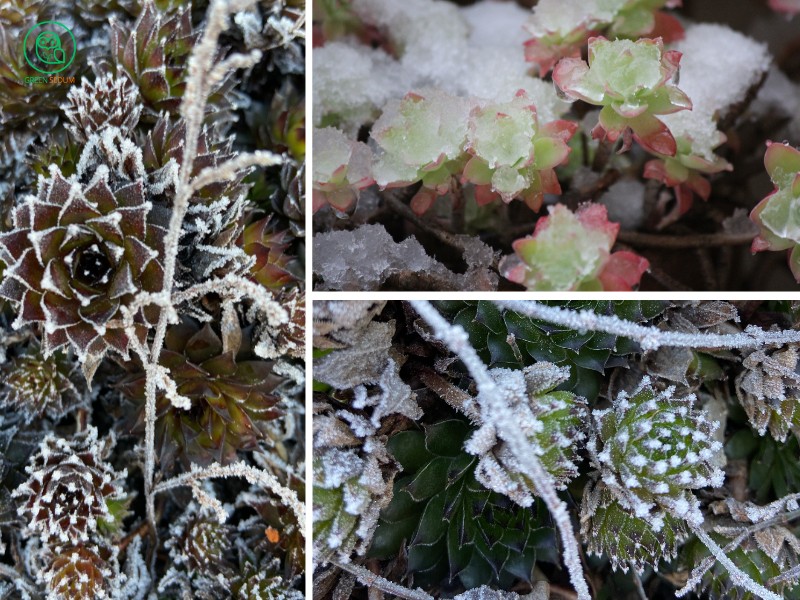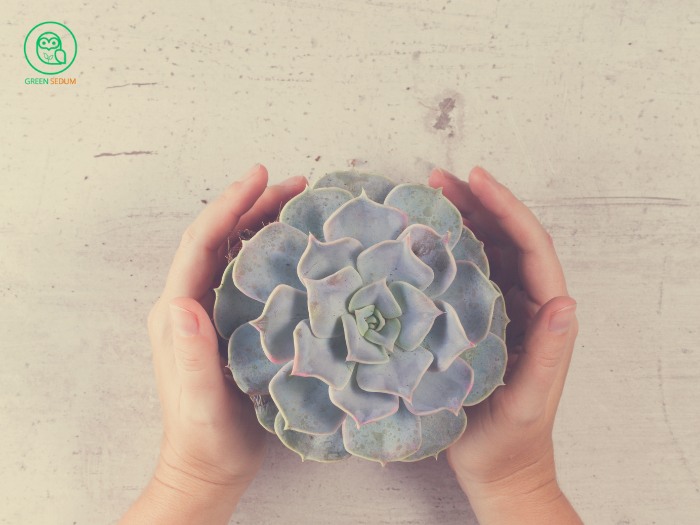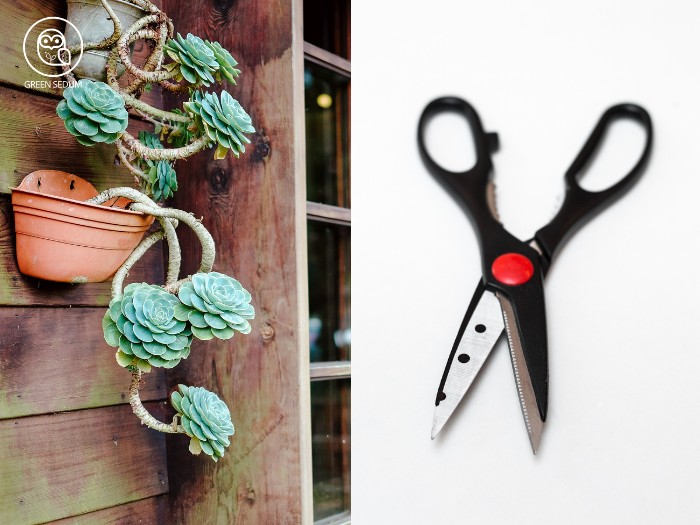As a passionate gardener, I’ve discovered that winter poses a real challenge when it comes to answering the question, “Can succulents survive winter?” These resilient plants have specific needs, and cold weather brings its own set of challenges.
Most succulents thrive in warmer conditions, so when temperatures drop, they can struggle to adapt. Frost and freezing conditions can cause root rot and structural damage, making winter survival a significant concern. To ensure your succulents remain healthy and vibrant, proper care during these colder months is essential.
1. Common Misconceptions about Succulent Winter Care
There are several misconceptions about how to care for succulents during winter that I’ve come across. One common myth is that all succulents need to be brought indoors to survive the cold. In reality, some hardy varieties can withstand winter temperatures if given the right conditions.
Another misconception is that succulents don’t need much attention during the winter months. On the contrary, they still require specific care, such as adjusting watering routines and ensuring proper drainage, to help them thrive through the colder season.
Understanding these myths and focusing on the actual needs of your succulents can make a big difference in their winter survival.
2. Types of Succulents That Can Handle Cold
When it comes to succulents and cold weather, not all plants are created equal. Some succulents can actually handle the chill better than others. If you’re in a colder climate, it’s essential to choose the right varieties to ensure they thrive even in winter.
2.1. Sempervivums
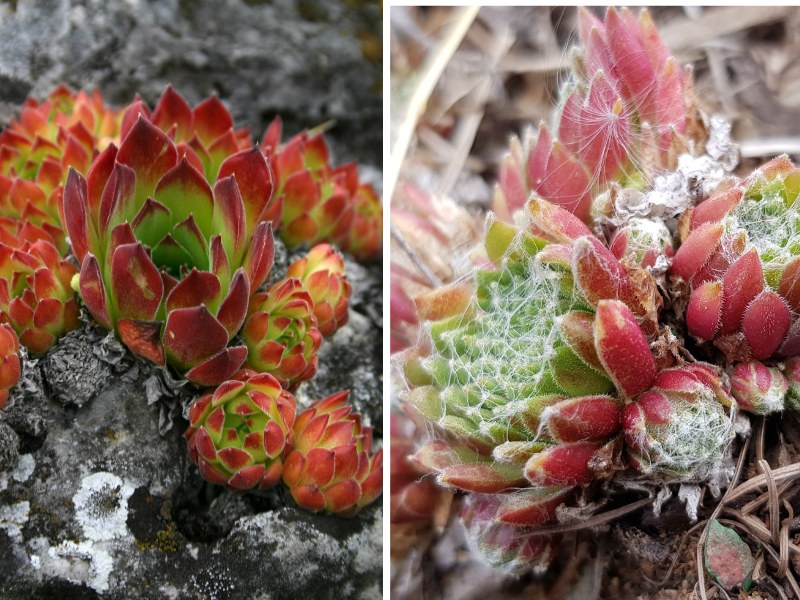
One of my favorite cold-hardy succulents is Sempervivum, often known as “hens and chicks.” These hardy plants are well-suited for winter weather and can survive frost and snow. Their rosette shape helps them retain moisture while shielding them from the harsh cold.
2.2. Sedums
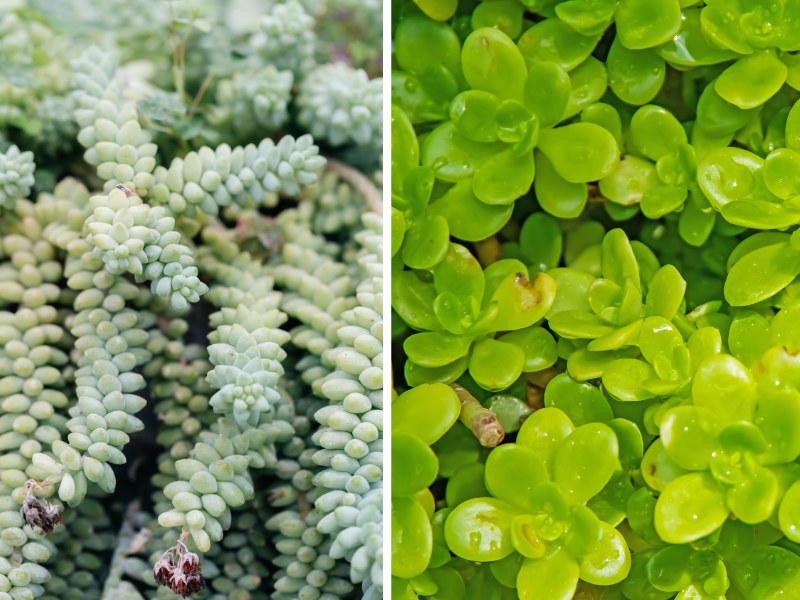
Another great option is Sedum. This variety is known for its resilience and ability to tolerate lower temperatures. Sedums come in various shapes and colors, adding beauty to your garden even in the colder months. Their adaptability makes them perfect for winter survival.
2.3. Opuntia (Prickly Pear Cactus)
Opuntia, or Prickly Pear Cactus, is a fascinating choice for winter. Despite its tough appearance, many Opuntia varieties are surprisingly cold-tolerant. In spring, they reward you with vibrant, beautiful flowers. They do well in colder climates, adding a touch of uniqueness to your winter garden.
2.4. Succulents That Struggle with Winter
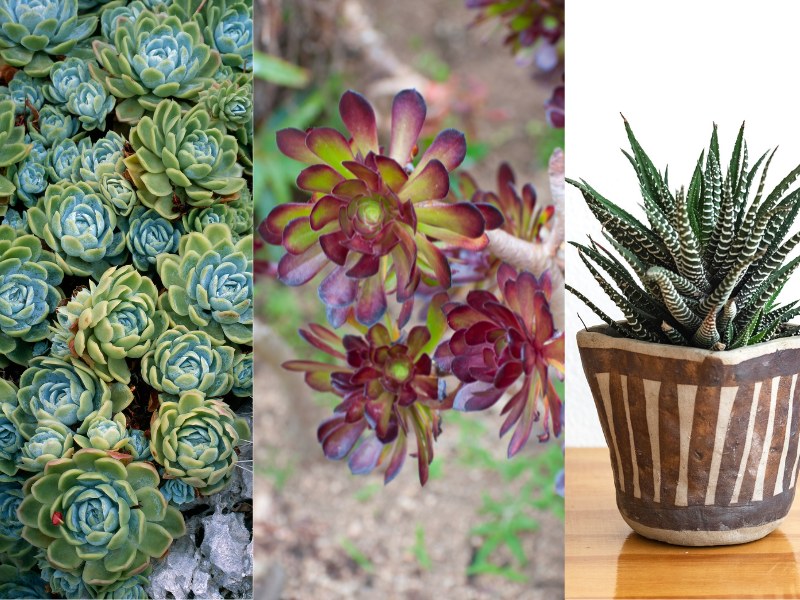
On the other hand, some succulents aren’t as cold-tolerant and may struggle with winter’s chill. For instance, varieties like Echeverias, Aeoniums, and Haworthias generally prefer warmer conditions and might not fare well in freezing temperatures.
If you have these types of succulents, it’s best to provide them with a warmer environment or bring them indoors during the colder months. Proper care and adjustments can help these more delicate succulents get through winter comfortably.
3. How to Identify Winter-Resilient Succulents
3.1. Recognizing Cold-Tolerant Varieties
Identifying succulents that can handle the winter chill is crucial if you want to keep your garden thriving through the colder months. Look for varieties known for their cold tolerance, such as Sempervivums, Sedums, and Opuntias.
These plants are designed to endure lower temperatures and can often handle frost better than others. When choosing succulents for winter resilience, check their specific hardiness zone to ensure they match your local climate.
3.2. Understanding Temperature Ranges
To better understand which succulents can withstand winter, it’s essential to know their temperature preferences. Cold-hardy succulents can typically survive temperatures as low as 20°F (-6°C) or even lower. On the other hand, more delicate varieties might start to struggle if temperatures drop below 50°F (10°C).
By familiarizing yourself with the temperature range each succulent can handle, you can make informed decisions about which plants are best suited for your winter garden.
4. Best Practices for Succulent Winter Care
Tips for Maintaining Healthy Succulents
Keeping succulents healthy through the winter months can be a bit of a challenge, but with the right practices, it’s definitely achievable. First, make sure to reduce watering, as succulents need less moisture during the winter. Overwatering can lead to root rot, especially when temperatures are low.
Also, if your succulents are indoors, place them near a bright window but away from direct drafts or heaters, which can cause temperature fluctuations. For outdoor succulents, consider covering them with frost cloths or moving pots to sheltered areas to protect them from harsh conditions.
Adjustments for Different Climate Zones
The approach to winter care can vary depending on your climate zone. In milder climates, you may only need minimal adjustments, such as providing some extra cover during frosty nights. However, in regions with severe cold, it’s crucial to take more extensive measures. For example, you might need to move your succulents indoors or into a greenhouse where temperatures can be controlled.
Additionally, choose cold-hardy varieties that are better equipped to handle extreme conditions. By understanding and adjusting to your specific climate zone, you can ensure your succulents stay healthy and vibrant through the winter season.
>>> Read more : Aerial Roots Succulent Guide: Causes and Solutions for Healthy Growth
5. Conclusion
Winter succulent care is manageable with the right steps: identify cold-hardy types, understand temperature tolerance, reduce watering, ensure adequate light, and avoid drafts.
Determine if your succulents are cold-hardy. For non-hardy types, bring them indoors or use frost cloths. Reduce watering, place them near bright windows, or consider a greenhouse for harsh climates. Following these tips will help your succulents thrive through winter.
“Summer fades and winter arrives, bringing challenges in caring for succulents. Embrace the seasonal shifts with calm, acknowledging the impermanence of weather. Stay mindful in your gardening, and see each change as an opportunity to cultivate patience and deepen your connection with nature.”
>>>Find out more:
- Understanding Why Summer Dormant Succulents Go Dormant and How to Care for Them
- Do Succulents Like Humidity? How to Care for Them in Humid Conditions

I’m Will Bernan, a gardening enthusiast with over 9 years of experience in succulents, indoor plants, and sustainable living. I also manage SEO for eco-friendly textile brands, promoting fabrics like bamboo and organic cotton.

